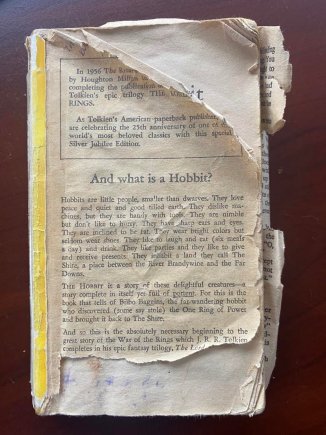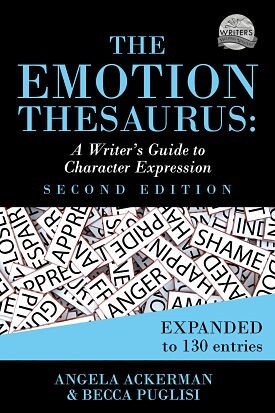Using Vocal Cues to Show Hidden Emotion
 “My Precious”
“My Precious”By Becca Puglisi
Any Tolkien fans in the house? I remember, as a teen, reading The Hobbit by the fire on a rare cold evening in Florida. It became a favorite that I would re-read until my copy literally fell to pieces.
One of my favorite scenes comes right at the beginning: the Unexpected Party. There are a lot of reasons it works so well���one of which is everything Bilbo is not saying. When the dwarves arrive (and keep arriving), he wants to know what they���re doing there, but instead of asking, he puts on his Happy Homemaker face and gets to work being hospitable. As it gets late, he doesn���t show them the door. He refrains from telling Thorin to get off his high horse and show some gratitude for Bilbo funding his little reunion, though you know that���s what he���s thinking.
The interactions between Bilbo and the dwarves ring true precisely because of all the subtext���the contrast between what the character says and what he���s really feeling or thinking. This subtext is a normal part of most real-life conversations; for this reason alone, it should be included in our characters��� conversations. But it���s also useful because whenever a character is hiding something, there���s inherent emotion involved. Emotion is good for our stories because well-written, clearly conveyed character feelings will often engage the reader���s emotions, pulling them deeper into what���s happening. So subtext is good on a number of levels.
But writing hidden emotion is challenging. Authors have to show the character portraying one emotion to the cast (pleasure, in Bilbo���s case) while showing his true feelings to the reader (confusion, frustration, and indignance). It���s a tall order, but this is where vocal cues can come in handy.
Vocal cues are shifts in the voice that happen when someone is feeling emotional. While we may be able to hide our feelings by masking our facial expressions and minimizing certain body language giveaways, the voice is harder to control. In a written scene, these vocal fluctuations act like signposts, leading the reader to the conclusions you want them to draw about the character���s true emotional state.
So when you need to show that a character is hiding their feelings from others, consider the following vocal cues.
 Pitch
PitchDoes the voice get high and shrill or go low and rumbly?
VolumeDoes the character move from a moderated level to almost yelling? Does the voice drop to a near whisper? Is it clear that they���re struggling to maintain a reasonable volume?
Does a clear tone turn breathy or husky when someone is aroused? When the character is close to tears, does the voice become brittle or cracked? Does it lose all expression and become flat when anger hits?
Does your verbose character suddenly clam up? Does her timid, verbally stumbling counterpart start running at the mouth? Might poor grammar appear in a well-educated character���s dialogue? Does a stammer or lisp announce itself?
What words might slip into a character���s vernacular when they���re feeling emotional that they wouldn���t normally use? Profanity and slurs? Words and phrases from their first language? Pat clich��s?
Nonspeech InterruptionsWhat sounds begin to pepper your character���s dialogue? Um, Hmm, Uhhh, throat clearing, and coughing can be signs that the character is uncomfortable and needs time to pull him or herself together.
For your character, consider which of these cues might be a possibility, then write it into the story when their emotion changes. Used consistently, they���ll signal the reader that the character is hiding something or that a certain emotion is in play.

Granted, for this to work, you need to first establish a baseline. Figure out your character���s normal speech patterns and habits and write those consistently so readers will get used to them. Then, when a vocal cue is used, they���ll know to take a closer look to see what the character is hiding.
For more information (and a handy reference), see our Deception in Dialogue Tip Sheet at One Stop for Writers.
And check out the 2nd edition of The Emotion Thesaurus: A Writer’s Guide to Character Expression , which is a treasure trove of information on how to show exactly what your character’s feeling���even when they want to keep it hidden.
What vocal cue might work well for your character? What cues have you seen successfully used to hint at hidden emotion? I���d love to hear from you.
The post Using Vocal Cues to Show Hidden Emotion appeared first on WRITERS HELPING WRITERS��.
Writers Helping Writers
- Angela Ackerman's profile
- 1014 followers



